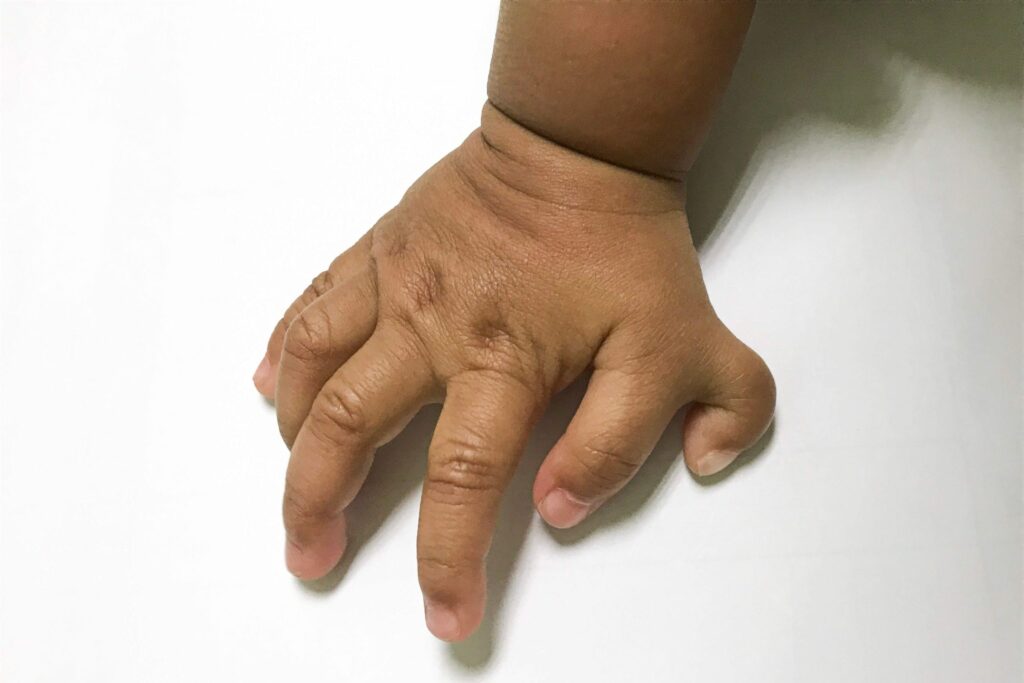What you Need to Know About Finger and toe Deformities

Of all the congenital deformities affecting infants, abnormalities of the fingers and toes are among the most common. Two of the most common deformities include extra digits (polydactyly) and webbed digits (syndactyly).
Extra fingers and toes occur in approximately two out of every 1,000 births. The most common site involves an extra fifth toe, but can occur with any digit. Extra digits tend to run in families. In fact, up to 30 percent of patients have a strong family history of polydactyly.
Your child’s physician will likely order an x-ray to determine if extra bones are present or just extra skin, called “rudimentary” digits. Rudimentary digits look like skin tags, usually near the thumb or pinky finger. If there is no bone involved, the pediatrician or surgeon may be able to tie a small piece of string at the base of the extra finger in the newborn nursery. This cuts off the blood supply to the extra digit, causing the tissue to die and eventually fall off on its own. If there is bone in the extra digit, however, it will have to be amputated around one year of age.
Syndactyly, or webbing between the fingers or toes, is also a common deformity in children and tends to run in families as well. In the feet, the webbing usually occurs between the smaller toes. The webbing does not usually cause any problems and there is no treatment needed.
Sometimes, syndactyly is also accompanied by polydactyly, or the digits may even be fused together. If this occurs, a hand surgeon will need to assess whether the digits share the same nerves and blood vessels, and if so, must perform corrective surgery when the baby is older.
Often times, polydactyly and synadctyly are isolated occurrences. However, your child’s pediatrician will likely be on the lookout for other anomalies in your child, including your child’s organs. There are certain genetic syndromes that are highly associated with finger and toe deformities, including Trisomy 13, 18 and 21 (Down Syndrome).
Sources:
- American Academy of Pediatrics
- Associated Anomalites in Individuals with Polydactyly.
Nelson Textbook of Pediatrics, 19th edition.
Pediatric Care Online - Foot and Leg Problems.
Powered by Bundoo®










